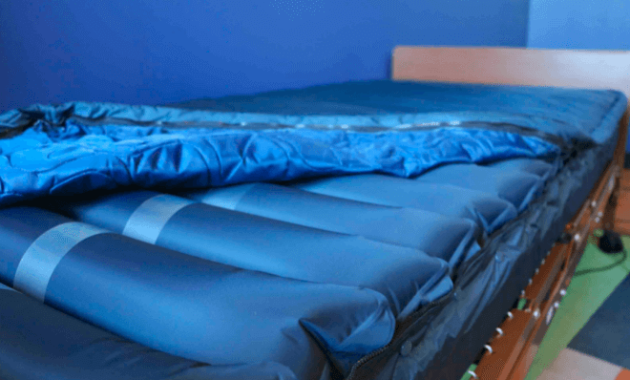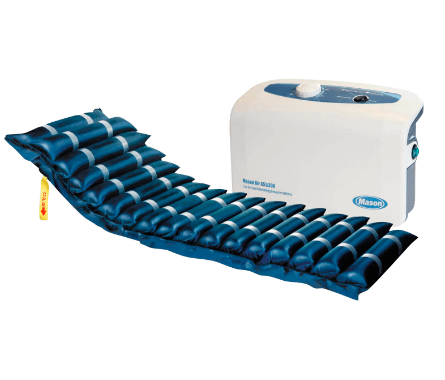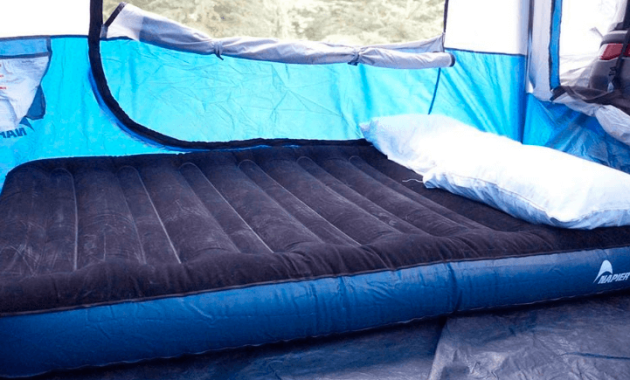The rate of immobile patients has increased in recent years rapidly. An immobile person has a high risk of suffering from pressure ulcers as they tend to use the bed for a long time. Low air loss mattresses are specially designed to treat and ease the pain of pressure wounds medically.
A low air loss mattress inbuilt air circulation system helps keep the blood circulation system regular to avoid pressure ulcers. These mattresses ensure maximum comfort to those already suffering from a pressure ulcer.
Using a conventional bed with a bad sore can only make it worse, and before you know it, the need for a low air loss mattress becomes a must for you.
Let’s dig into the deep to know more about the purpose and functionality of a low air loss mattress.
What is a Low Air Loss Mattress?

A bad is where most people rest and reprieve after a long workday. But for the immobile or bed-confined patients, a bed becomes a place that triggers their pain and anxiety. The situation becomes worse when the risk of pressure wounds or ulcers arises.
Low air loss mattresses are fabricated from expandable tubes that can puff in and out air to ease the user’s pain. Patient’s blood circulation inflates and deflates because of the air circulation system in a low air loss mattress for speedy recovery.
Purpose of A Low Air Loss Mattress?
Till now, we’ve learned what a low air loss pressure mattress is, and now it’s time to know the purpose of using a low air loss mattress.
In the previous part, we mentioned that low air loss mattresses are made to treat one with a pressure wound. These mattresses are designed to keep the blood circulation normal and help bedridden patients avoid bedsores and wounds.
Rather than using the usual bed, using a low air loss mattress is highly recommended by doctors for treating pressure wounds.
What is Pressure Ulcer?
A pressure ulcer is known as the injury of soft tissues due to low oxygen flow and nutrition. Prolonged pressure on the skin causes cells to die, resulting in joint and bone infections.
Some pressure ulcers cause the spot to change color to red, while in some cases, it can also cause a breakout of the skin leading to an open wound.
Who Can Use a Low Air Loss Mattress?
Immobility leads to long-term bed dependents. The friction between the bed surface and the patient’s back causes damage to the skin and obstacles in the blood flow. But a low air loss mattress helps the patient keep floating on the air-filled surface.
The air-filled cells reduce the friction between the patient’s skin and maintain moisture. A low air loss mattress becomes a must for patients suffering from stage 3 and several cases of stage 2 wounds.
Working Method of a Low Air Loss Mattress

A low air loss mattress consists of air, gel, water, or foam. These materials are better known for their low density and fewer frictions.
The laser-made air holes or chambers work as the base of these mattresses. Air chambers are often referred to as the cylinder of the bed as they hold and release the air. Usually, these air chambers are made from Nylon or PVC.
Low air loss mattress exploits 100-150 liter air per minute to keep the user afloat in the air, maintaining the average temperature of the human body. The air is the primary support system for a low air loss mattress.
Apart from air chambers and air, one of the key components of a low air loss mattress is the pump. The pump helps the mattress to keep the air circulation stable.
The mattress cover isn’t considered a necessary component. Using a cover sheet on a low air loss mattress can backfire for the patient. The cover sheet material can cause friction between the body cell leading to pain and infection on the wounded spot.
How to Choose a Low Air Loss Mattress?
As now you’ve already known what a low air loss mattress is, it’s time to find the right one for your needs. The first feature to consider is the low air loss functionality. It might sound obvious to you, but mattress-like alternate pressure can confuse you with similar characteristics.
We suggest you look for the “continuous low airflow” feature in the mattress to ensure buying the right one.
Now moving to the next feature, we have the pressure indicator machine. While using a low air loss mattress, keeping track of air pressure is essential for patient safety. The pressure indicator usually comes in two types- visual and audio.
The visual pressure indicator is the most common type in the market, but we suggest you go for the audio type for patient safety.
How much weight the mattress can take affects its work efficiency. Usually, the weight capacity is mentioned in the catalog or user manual. Before buying one, make sure that the mattress weight limit is at least 5- 8 kg extended than the patient weight.
Apart from the features mentioned earlier, you should also consider components like air chamber fiber type, motor, and pump noise variation.
How to Put up a Low Air Loss Mattress?

Setting up a low air loss mattress is not a hard job to pull. It takes only 20-30 minutes to set it up. The box containing the mattress doesn’t weigh more than 30 pounds. And pretty much all available low air loss mattresses are portable.
A portable low air loss mattress setting up process is similar to any traditional mattress. After unboxing the mattress, you just have to place it in a bed and set up the visual monitor and motors safely around the bed.
Conclusion
If you’ve already come this far from the article, you now know what a low air loss mattress serves its user. A better understanding of what purpose a low air loss mattress does can help you choose the best one for your use.
Dealing with immobility and pressure wounds is quite stressful and challenging. And if the surface is not helping the patient’s situation, it adds more pain and suffering. And that’s why it’s important to use a low air loss mattress for quick recovery.
If you find this article helpful or have any early experience using a low air loss mattress, feel free to share the details in the comment box.
